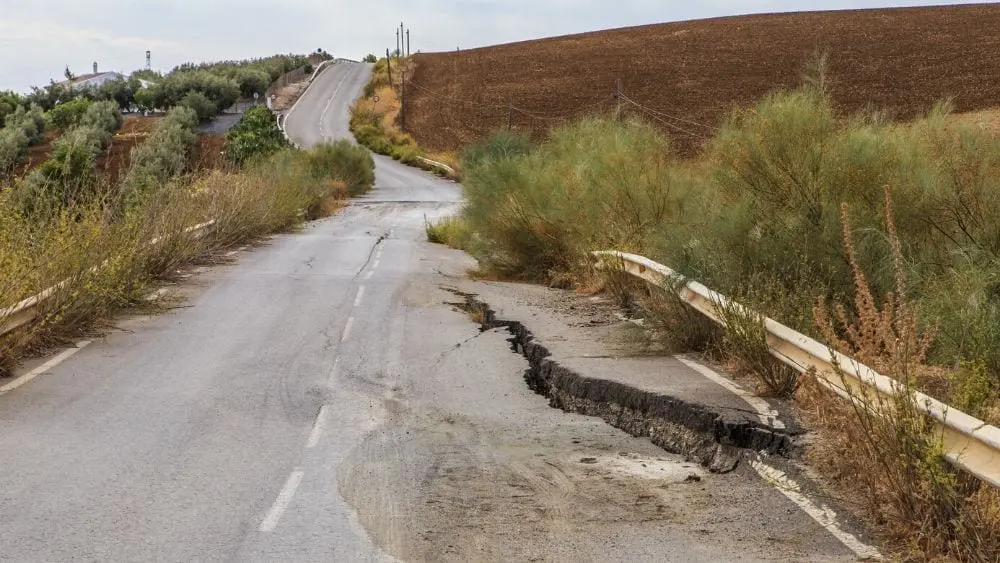
Earthquakes can rattle the foundation and
structures of homes, sometimes toppling entire buildings like a house of cards.
It’s a fear on the mind of every homeowner who resides along fault lines across
the United States. But is it necessary for homeowners to have earthquake
insurance?
While most Americans think Alaska, Hawaii
or California are the main states at risk of earthquakes, the United States has
about 20,000 earthquakes a year and properties in as many as 42 states are
considered at risk, according to the U.S. Geological Survey.
If you’re doing your research on homeowners
insurance and are wondering about coverage for earthquakes, here are seven things
you need to know.
1. Separate Coverage Is Necessary
Just like flooding, earthquakes aren’t
covered in your standard home insurance policy in the United States. Instead,
homeowners who want earthquake insurance need to buy it as a separate policy or
have it added onto an existing policy through an endorsement.
While flood insurance is doled out via the
federal government through the National Flood Insurance Program, earthquake
insurance is available through private insurance companies. Policies are
readily available via private companies such as State Farm, Allstate,
Nationwide and Safeco.
It’s worth noting that if your home is
destroyed in an earthquake and you don’t have earthquake insurance coverage,
you’re still on the hook to pay for your mortgage on the property. You’re also
solely responsible for repairs and rebuilding, paying out of pocket for these
expenses.
Homeowners need to assess their risk of
facing an earthquake, consider if earthquake insurance is important to have
and, if so, ask for a quote.
2. What the Policy Covers (and Does Not Cover)
Earthquake insurance covers damage caused
to your home resulting from a sudden trembling or shaking of the earth. The
coverage refers to the physical structure of your home and its foundation — like
your basic dwelling insurance — think of the four walls, electrical and
plumbing, furnaces, water heaters and any built-in appliances.
Just like any other policy, the coverage is
based on the replacement value of your home, not the market value. While your
home’s retail value may be $500,000 because of its prime location, insurers make
their calculations based on the cost of labor and materials needed to rebuild
or repair the home.
Earthquakes have sparked subsequent events,
such as landslides, avalanches, floods, fires and tsunamis. Earthquake
insurance, however, doesn’t include any losses and damage caused by fire,
explosion, flood or tidal wave triggered in the aftermath of an earthquake. So these issues would need to be addressed
separately. For the most part, your basic homeowners insurance covers fire, and
additional flood insurance can be purchased.
Your job is to check your home policies’ details,
including any add-ons, to make sure your bases are covered when it comes to additional
structures on your property or the risks pertaining to water damage, gas leaks or
explosions that may occur in the fallout of an earthquake.
Your car insurance should protect your
vehicle from earthquake damage, along with other catastrophes, if you have a
comprehensive auto insurance policy. It’s worth double-checking, though.
3. Why This Coverage Shouldn’t Be Overlooked
Despite the U.S. Geological Survey warning
that 42 states — nearly 85 percent of the country — are at risk of encountering
an earthquake, only 8 percent of homeowners have earthquake insurance,
according to 2016 data from the Insurance Information Institute.
The statistics suggest that residents in
the West are more likely to have earthquake insurance at 14 percent, followed
by the Midwest at 7 percent and the South and Northeast at 6 percent.
How much you’ll pay for your earthquake
insurance policy hinges on a handful of factors. For starters, where you live
will make a stark difference. Regions across the U.S. are graded on a scale of
one to five depending on the likelihood of an earthquake occurring. If your
home happens to be situated along a fault line, you’re going to see much higher
rates.
The condition of your home — its age, its
materials and its make — make a world of difference too. A decades-old brick
home, for example, will cost far more to insure than a new build that has
state-of-the-art quake mitigation and is up to current building code standards.
And then there’s your deductible, or how
much you’re willing to pay in an insurance claim before your insurance coverage
kicks in. Paying a higher deductible if and when things go wrong can lower your
insurance premiums.
As a general rule, when it comes to
earthquake insurance, insurers calculate your deductible as a percentage of
your home. Your deductible can range
anywhere from 2 percent up to 20 percent of the cost to repair or rebuild your
home.
If you’re in a state that’s ranked as a higher
risk for earthquakes, insurers typically set the deductible at 10 percent, at
least. What does that equate to? If your home was destroyed in an earthquake
and it costs $100,000 to repair it, with a deductible of 10 percent, you’d be
on the hook for the first $10,000, for example.
5. California Has Its Own Set of Rules
California has endured some of the
country’s worst earthquakes, due to the San Andreas Fault that from the Gulf of
California along the California coast. Thus earthquake insurance in the state
is on a completely different playing field and is entrenched in law.
A lot of this is steeped in history: In January
1994, a magnitude 6.7 earthquake hit Northridge, a neighborhood in Los Angeles
on a fault that no one knew existed, causing what’s been estimated as $25.6
billion in insured losses. Only half of that estimated damaged was covered by
insurance as the industry grossly underestimated the monumental costs tied to
even a moderate earthquake.
This natural disaster was a major blow to
insurers’ coffers — the industry had to shell out in claims three times more
than it earned in earthquake premiums in the three decades before the
Northridge earthquake, according to the Insurance Information Institute. Some
insurers had to shutter their doors and if they didn’t, they came uncomfortably
close to insolvency.
In the aftermath, insurance companies hiked
their rates and deductibles to premiums so high, the cost of earthquake
insurance became unrealistic. According to some reports, deductibles
skyrocketed from the standard 10 percent to 15 percent, for example. Some
restricted or stopped writing earthquake policies, full stop. The state had to
step in to fill the void as far too many communities were unprotected.
By 1996, authorities in California
introduced the California Earthquake Authority (CEA), which describes itself on
its website as a “not-for-profit, publicly managed, privately funded”
organization that focuses on providing affordable, basic earthquake insurance
to homeowners across California. Private
insurance agents sell earthquake policies and act as the liaison with the CEA.
In fact, under California law, homeowners insurance companies need to offer
earthquake coverage to their policyholders. Ultimately, it’s up to homeowners
to shop around with other insurers, purchase it or forgo coverage altogether.
So what does the CEA’s coverage look like?
The conventional route offers a 15 percent deductible on your home’s
replacement cost, covers the main home (excluding pools, patios and external
additions), personal possessions up to $5,000 and costs incurred from living
elsewhere to the tune of about $1,500. Keep in mind, coverage can vary
depending on your home and your family’s needs.
6. Other States Are Vulnerable, Too
U.S. Geological Survey data suggests that, other
than California, 15 states are also at high risk for earthquakes: Alaska,
Arkansas, Hawaii, Idaho, Illinois, Kentucky, Missouri, Montana, Nevada, Oregon,
South Carolina, Tennessee, Utah, Washington and Wyoming.
The survey also lists eight states that
don’t have major hazard levels: Florida, Iowa, Kansas, Louisiana, Michigan,
Minnesota, North Dakota and Wisconsin.
You also don’t necessarily need to live
along fault lines to experience earthquakes. These days, human activities such
as mining, oil production and fracking (the process of creating fractures in
deep rock formations) have been tied to earthquake risk.
Urban developments are often built in
seismically active areas, and as buildings age and aren’t upgraded to current
building code standards, this can leave buildings and communities vulnerable to
earthquake damage.
7. How to Calculate Your Risk
There is always plenty of speculation on
where and when the next earthquake will strike. Seismologists have warned about
the “Big One” — the earthquake of all earthquakes — for decades. The U.S. Geological
Survey suggests that there’s a 70 percent probability that a 6.7magnitude or
higher earthquake is slated to hit the San Francisco Bay area at some point in
the next three decades. Only 14 percent of San Francisco residents purchased
earthquake insurance in 2017 though, according to the California Department of
Insurance.
The Department of Insurance in Missouri,
which is the third largest market for earthquake insurance across the U.S.,
warned that fewer homeowners were taking out policies and the market had “significantly
contracted” in the past 20 years. Insurers, however, were creating strict
underwriting standards, making some homes ineligible for coverage, while other
insurers stopped issuing policies altogether.
If you’re wondering how seismologists have calculated risk in your state, the Federal Emergency Management Agency lists risk in your area along with earthquake hazard maps.

Carmen Chai is an award-winning Canadian journalist who has lived and reported from major cities such as Vancouver, Toronto, London and Paris. For NewHomeSource, Carmen covers a variety of topics, including insurance, mortgages, and more.
 Bedroom Lighting Ideas for the Perfect Retreat
Bedroom Lighting Ideas for the Perfect Retreat